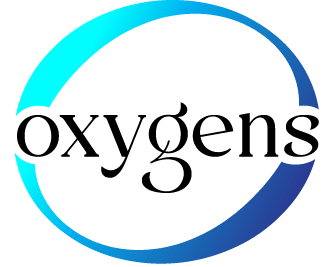
Hyperbaric Dosages
The body receives more oxygen than usual through the simple and non-invasive method known as hyperbaric oxygen therapy. The delivery method employs a hyperbaric chamber, often known as a “pressure vessel,” in which the body is subjected to varying pressures.
The pressure that is provided directly affects the oxygen dosage, so the higher the pressure, the higher the dosage of oxygen.
The amount of time and oxygen being breathed in can also be used to modify the effective dose of oxygen (during HBOT). The frequency of application is the last component of this puzzle. But once more, the pressure is the crucial factor, therefore let’s first explain:
- Pressure
- We need a consistent and continuous supply of oxygen, and the ‘natural process’ of breathing provides us with this essential ingredient. During this phase, oxygen enters the lungs deeply before exiting the lung tissue and entering the bloodstream.
- The bulk of oxygen (around 98.5%) in the bloodstream is then strongly bonded to red blood cells, and by the time these cells exit the lungs, they are essentially at their maximum oxygen carrying capability. The circulatory system is subsequently used to carry the oxygen until it reaches the metabolically active tissue. They now loosen their tight bond, allowing oxygen to diffuse into the nearby tissue. A red blood cell can hold up to one million of these oxygen molecules, however keep in mind that they are minuscule in comparison to the red blood cell that they are travelling on.
- Only a little fraction of oxygen, about 1.5%, can leave the lung tissue and enter directly into the blood plasma (the liquid part of the blood), where it can move about freely and quickly without being constrained by being tightly linked to these red blood cells. Our huge red blood cells (roughly speaking) cannot reach places where the oxygen that passes in this compartment can reach. Therefore, when dealing with damaged tissue and/or circulatory issues, the plasma oxygen levels might be quite essential.
- Only 0.3 ml per 100 ml of oxygen can be transported in human blood plasma under typical air circumstances. This amount is far below what is required to maintain life.
- As a result of the oxygen molecules’ increased force under hyperbaric pressure, more oxygen can leave the lungs and move through the blood plasma. Therefore, in addition to receiving more oxygen, you are also receiving more oxygen that can readily move through blood fluids and reach every area of tissue that is encircled by fluids – essentially everywhere inside the body! This is almost ‘genuine’ liquid oxygen.
- A person who lives at sea level is at one atmosphere of absolute air pressure (ATA), which is how hyperbaric pressure is commonly measured. In terms of air pressure, this is equivalent to 760 mm (or 29.9 inches) of mercury or 14.7 psi (pounds per square inch).
- When discussing HBOT, we begin at 1.0 ATA, which corresponds to the average air pressure at sea level. We are basically adding another atmospheric of pressure, or 14.7 psi, for every 33 FSW (feet of sea water) of pressure. As a result, if a 2.0 ATA hyperbaric pressure is provided, this pressure dosage is 14.7 psi or 33 FSW.
- In both private facilities and wound care clinics, hyperbaric pressures are typically less than 2.5 ATA.
- We need a consistent and continuous supply of oxygen, and the ‘natural process’ of breathing provides us with this essential ingredient. During this phase, oxygen enters the lungs deeply before exiting the lung tissue and entering the bloodstream.
2. Time
- HBOT sessions are typically limited to 60 to 90 minutes. This lessens the chance of the body accumulating too much oxygen, adding to the astounding safety records displayed by the facilities providing this service.
3. The Oxygen Content
- In general, hyperbaric oxygen entails breathing oxygen concentrations that are greater than normal, all the way up to 100% oxygen. We are currently breathing air that contains only 21% oxygen. Remember that in a hyperbaric chamber, breathing ordinary air will still allow for the delivery of extra oxygen to the body.
4. The Regularity of Deliveries
- Many of the physiological advantages of HBOT can be attained with the aid of frequent delivery, which can play a significant role. When using this approach to manage wound care or even in cases of chronic disorders, this is of utmost relevance. The “40 hour hyperbaric protocol” is a fairly popular procedure that has been found to provide these physiological effects. Pressure (from 1.3 ATA to 2.4 ATA) and time (from 60 to 90 minutes) for this treatment have been adjusted. You can see 1.3 ATA for 60 minutes on one end of the range and 2.4 ATA for 90 minutes on the other. The most intriguing fact to note is that both methods have been demonstrated to deliver potent outcomes. Regarding the 40 hour hyperbaric protocol, they are substantially the same in terms of frequency of delivery but significantly different in terms of pressure and time:
Using a 40-hour hyperbaric protocol:- It is generally known that daily HBOT treatments, lasting up to 40 sessions, are the most effective for achieving the full physiological advantages of HBOT.
- Two HBOT sessions a day are not unusual during this programme, which has been widely adopted by many centres and demonstrated to produce excellent clinical results. Note that a minimum 4-hour gap is typically advised between sessions in order to minimise the risk of oxygen poisoning and maintain HBOT’s strong safety records.
- Usually, 5 days straight are advised, followed by a 2-day break.
- With the help of this treatment, it is possible to complete 40 hours of HBOT in one or two months (when applied twice daily). (If only HBOT sessions were conducted every day)
We now have all the factors that can affect the amount of oxygen that will work best for HBOT.
Oxygens, Excelsior House Mucklow Hill Halesowen B62 8EP
BOOK HERE
